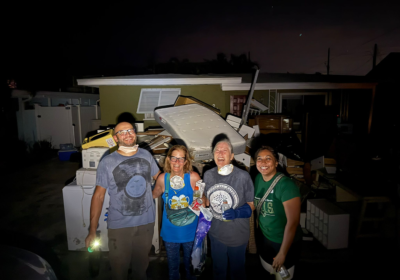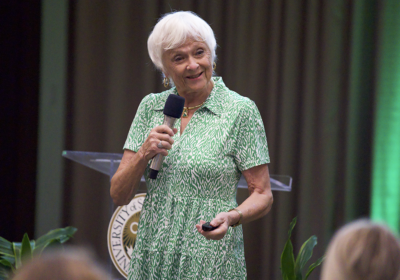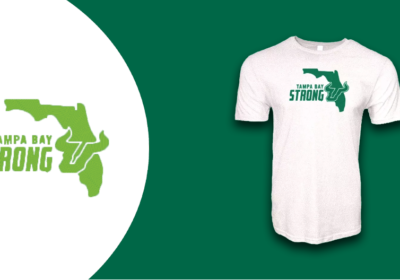USF researchers develop app to monitor flooding during hurricanes

Barnali Dixon, the principal investigator leading the development of CRIS-HAZARD, said the app is a platform where “anybody, anywhere” can upload pictures to monitor and manage flood-related risks.
Funded by a $1.5 million National Science Foundation grant, the project uses artificial intelligence to analyze images and assess flood severity.
“We use AI to extract relative water height so we know whether there’s major or minor flooding happening,” Dixon said. “The app provides the model, the data and the flood map that can then be used for policy-making.”
Related: USF puts safety first when deciding campus closures, officials say
As Florida navigates hurricane season, the free web-based CRIS-HAZARD app, which launched in September, gives people access to real-time data that officials say could aid emergency management.
Dixon said some people uploaded images of the flooding they experienced during Hurricanes Helene and Milton.
“I wanted community members to be safe first before uploading pictures,” Dixon said. “But I was glad to see that some people uploaded pictures because we did not do a formal launch, we did a soft launch.”
The app is based on the Community Resiliency Information System (CRIS), a platform developed by USF’s Initiative on Coastal Adaptation and Resilience (iCAR) to help communities report concerns.
Jake Andrews, a computer science graduate student, “trains” the AI models used in CRIS-HAZARD to convert photos into data that predict future flood risks. He said he is refining the program to improve its accuracy.
“I don’t know if anyone would want to consider using it for emergency response in the future,” Andrews said. “But if it ever became robust and accurate enough, that could be an option.”
He said one way the app could support emergency management is by identifying areas that need to be evacuated.
“If people are actively submitting photos, then that could prime responders to know there is heavy flooding in some areas,” Andrews said. “That could influence who gets called to evacuate first.”
Dixon said the more images submitted to the app, the better the models can be trained.
“We want to make people aware of this app,” Dixon said. “The more people use it, the more data we’ll get and the better AI models will work.”
Related: USF ‘Tampa Bay Strong’ campaign supports students recovering from storms – The Oracle
Dixon said the app allows USF St. Pete officials to use static camera images to measure seawall water levels and evaluate campus impacts.
Kelly Sullivan, emergency and safety manager at USF St. Pete, said emergency management has two main objectives: ensuring nobody gets hurt and reopening campus as soon as possible.
He said sources, such as the National Hurricane Center and the National Weather Service, provide the necessary information to meet these goals.
Sullivan said he looks forward to discussing with Dixon how to operationalize the app further to make it a valuable resource.
“The app is not currently part of our decision-support information,” Sullivan said. “Could it be in the future? Potentially.”
Related: USF experts say students need mental health support post-Milton
Scott McMillion, campus safety and security assistant director for USF Sarasota-Manatee said he was surprised he had not heard of the project earlier on.
“I’d rather have more tools than less,” McMillion said. “So, it’s like, ‘Wow, that’s out there.’ I didn’t know we had such a thing.”
McMillion said it’s important to study weather events through projects like CRIS-HAZARD.
“I love that USF is doing research because storms are going to continue to come, flooding is going to continue to happen,” McMillion said.
Andrews said he is optimistic about the project’s future impact on flood management.
“Down the line, after enough people have used the app and the models have improved, you might start seeing changes to local infrastructure or more action taken,” Andrews said.






